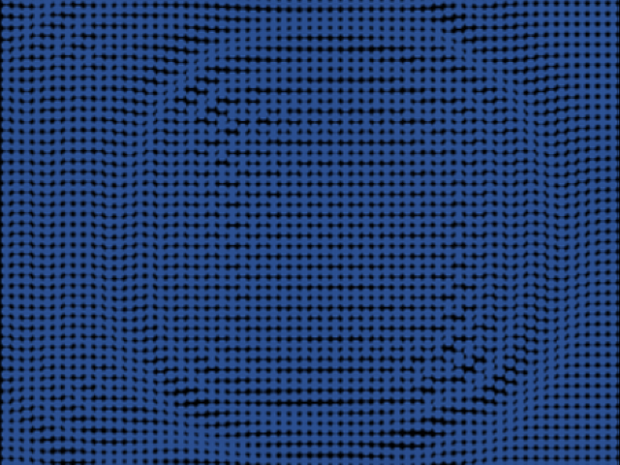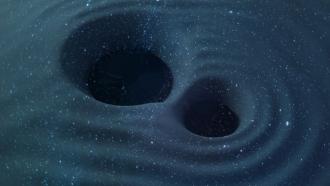
Representative image of a gravitational wave / Research Matters.
An international team that included Indian researchers has analyzed the published results on Gamma rays in the immediate aftermath of the recent detection of Gravitational waves by the Laser Interferometer Gravitational-wave Observatory (LIGO) – called the GW150914 event, and has concluded that the non-detection of High Energy Neutrinos (HEN) during that event suggests an upper limit to the energy of the associated short Gamma Ray Burst (GRB).
Short GRBs are celestial outbursts of Gamma rays that, in a few seconds, put out as much energy as the Sun does in 10 billion years. Scientists believe they are produced from colliding celestial objects like neutron stars or black holes. GRBs are usually detected by the light they emit. However, most of the energy in such explosions is carried in forms other than light. For instance, GW150914 was a merger of two black holes, with the energy released in gravity waves being thousands of times more than what GRBs emit in light. In GRBs, it is particles like the protons that carry away much more energy than light. As they come out of the source, these energetic protons produce, among other things, high-energy neutrinos, which can be detected on Earth by specialized detectors.
Neutrinos are very lightweight particles that travel nearly at the speed of light, and interact so weakly that they can pass straight through a billion kilometres of lead. Large numbers of them can therefore reach us from celestial objects. It has been estimated that nearly 65 billion neutrinos from the Sun pass every second through one square centimetre of Earth (and our bodies!). This makes neutrinos excellent messengers of celestial events from the farthest parts of the universe. Detectors like the Antarctica-based IceCube are just beginning to picture the universe in neutrinos.
Within 0.4 seconds of the gravitational wave event GW150914, the space-based Fermi Gamma ray Burst Monitor (GBM) detected the signal in Gamma rays. However, there was considerable uncertainty about the location. The team of researchers from the Raman Research Institute, Bengaluru, University of Johannesburg and Pennsylvania State University, followed up on the GBM results, and through theoretical modelling, they calculated the amount of high-energy neutrinos that IceCube should detect from this short GRB. Even though no high-energy neutrinos were detected at that time in IceCube, the team used this fact to put an upper limit on the total energy released by this short GRB. Additionally, they also found that the total energy released by this short GRB in particles or light, is very small when compared to that in gravitational waves.
“The ability to observe simultaneously in Gravitational waves and Gamma rays has ushered in the era of multi-messenger astronomy. We look forward to more instances of coinciding detections, because by combining such observations and theoretical modelling, we can learn not only from what we detect, but even what we do not”, concludes Prof. Nayantara Gupta.
About the author and work:
Prof. Nayantara Gupta is an Associate Professor at the Department of Astronomy and Astrophysics at Raman Research Institute, Bengaluru. Contact: <nayan@rri.res.in>.
The paper titled ‘High-Energy Neutrinos from the gravitational wave event GW150914 possibly associated with a short Gamma-Ray burst’ was published in the journal Physical Review D.






